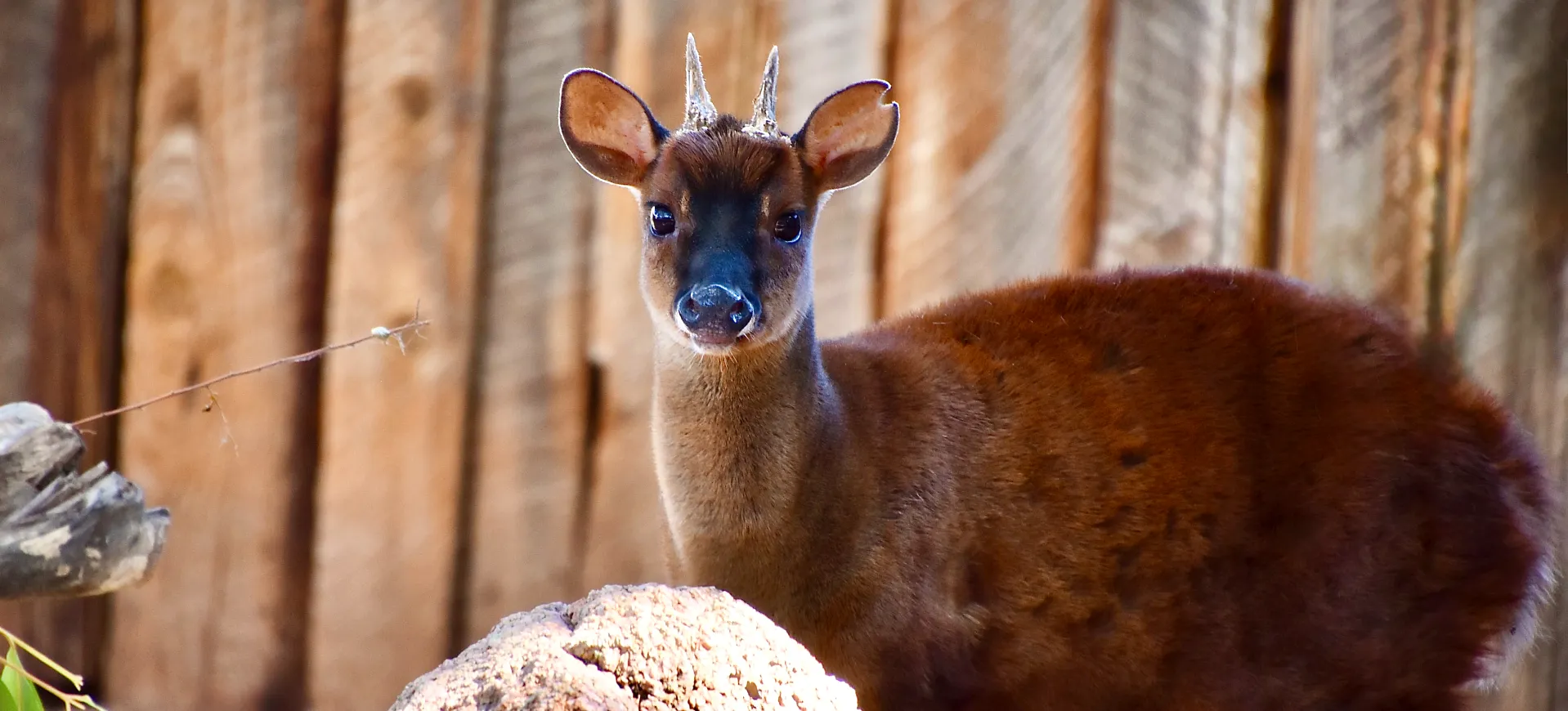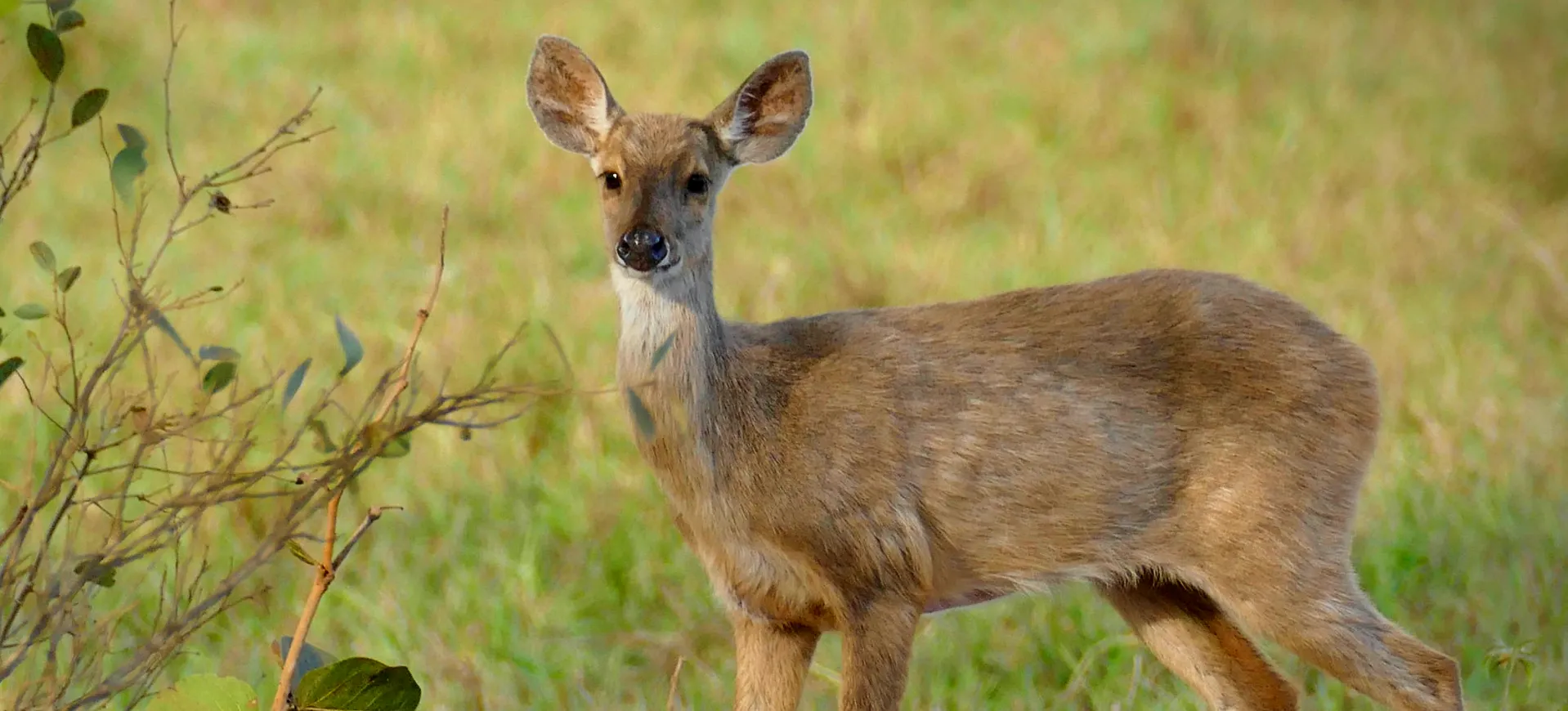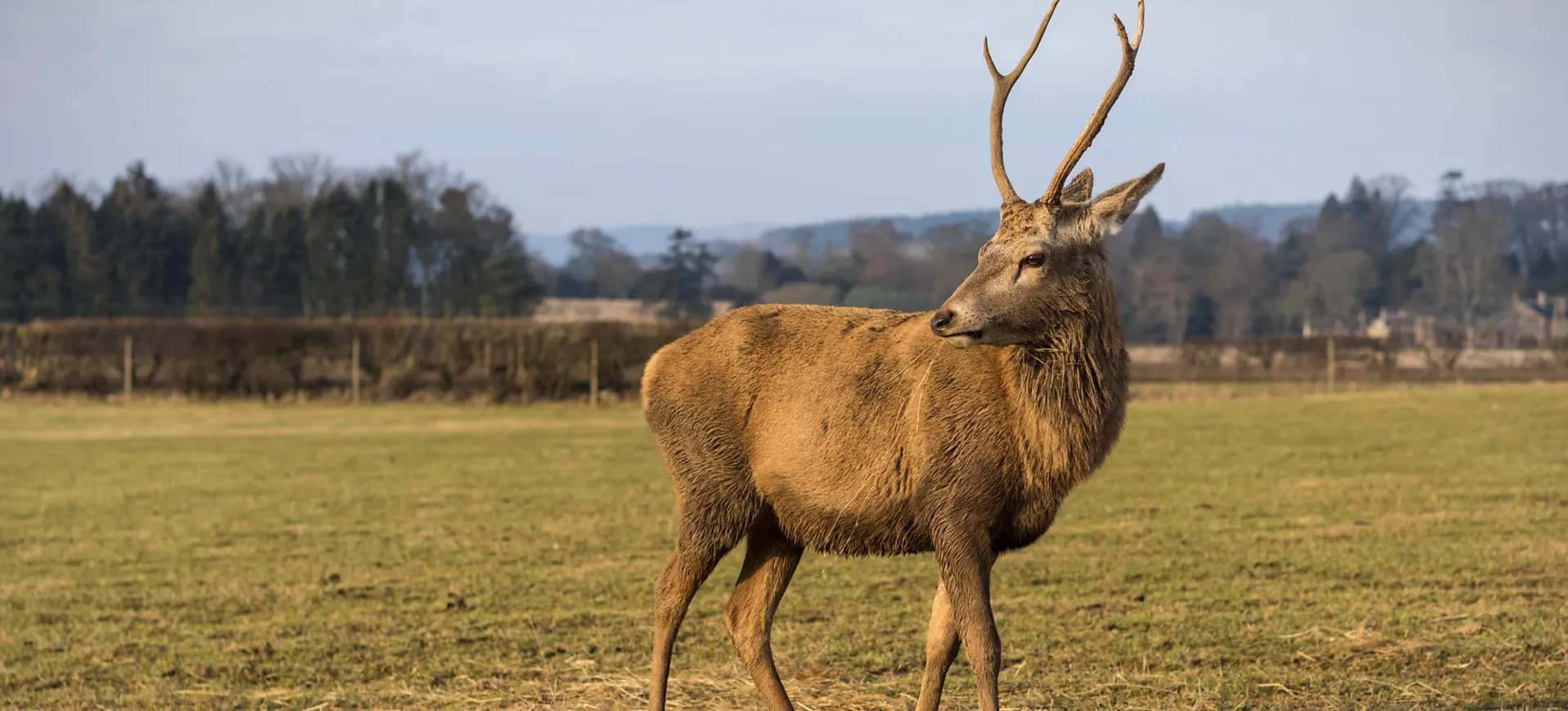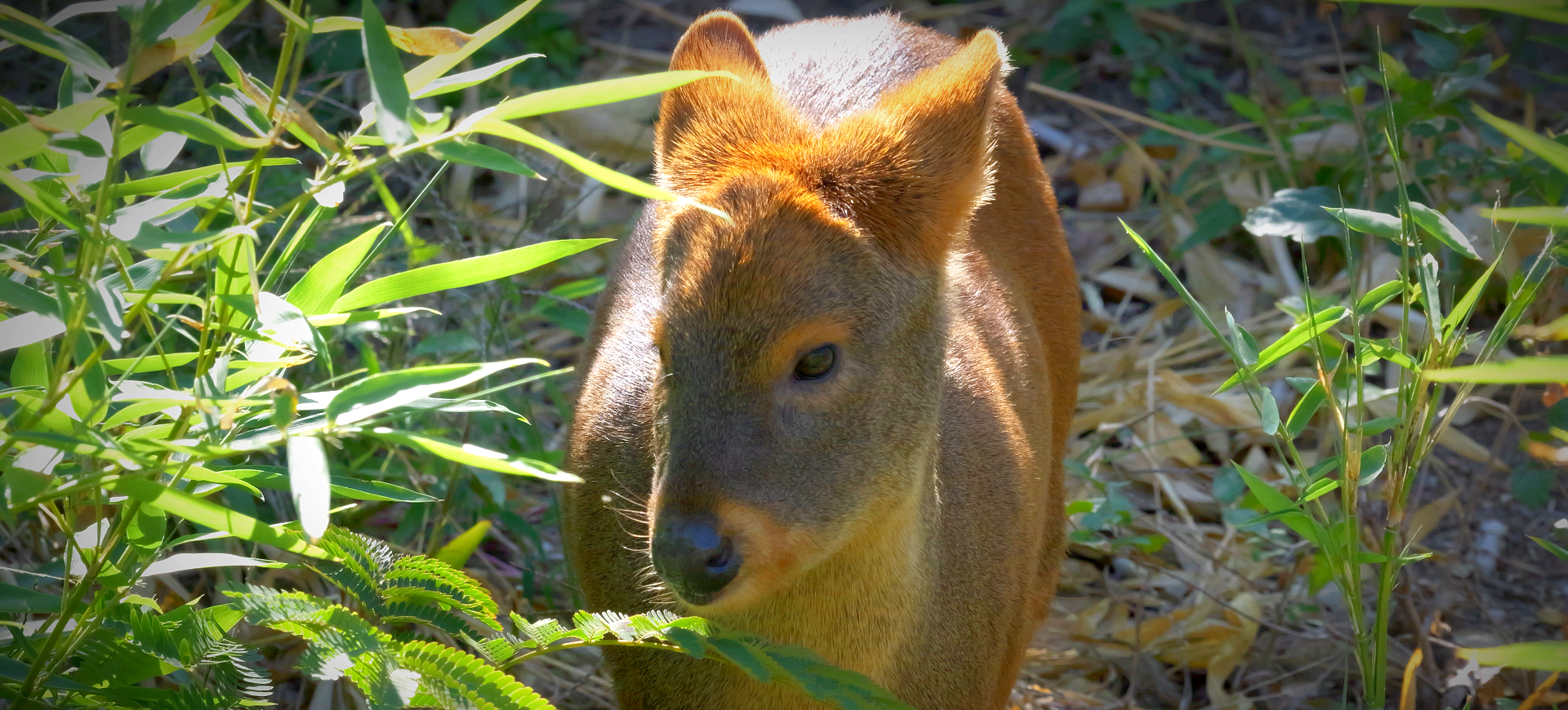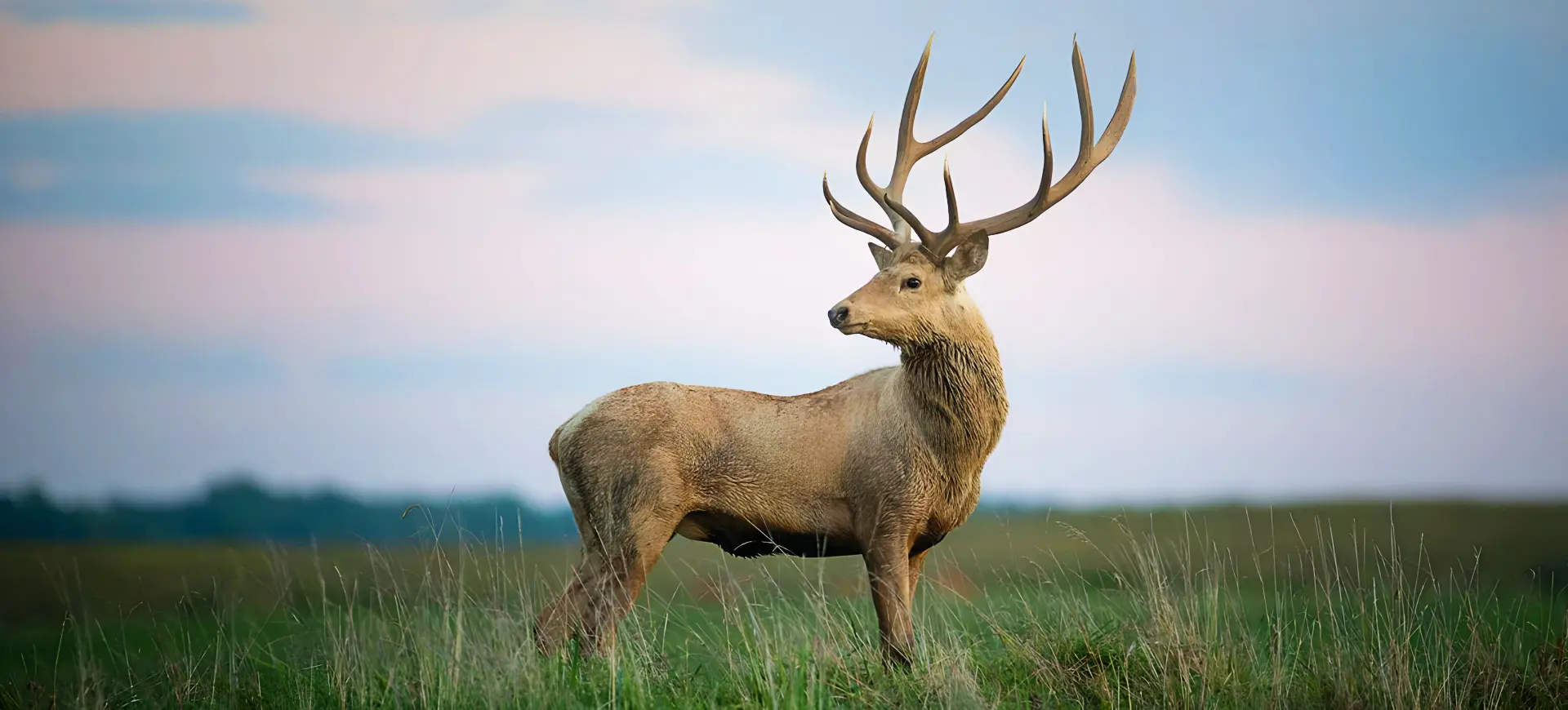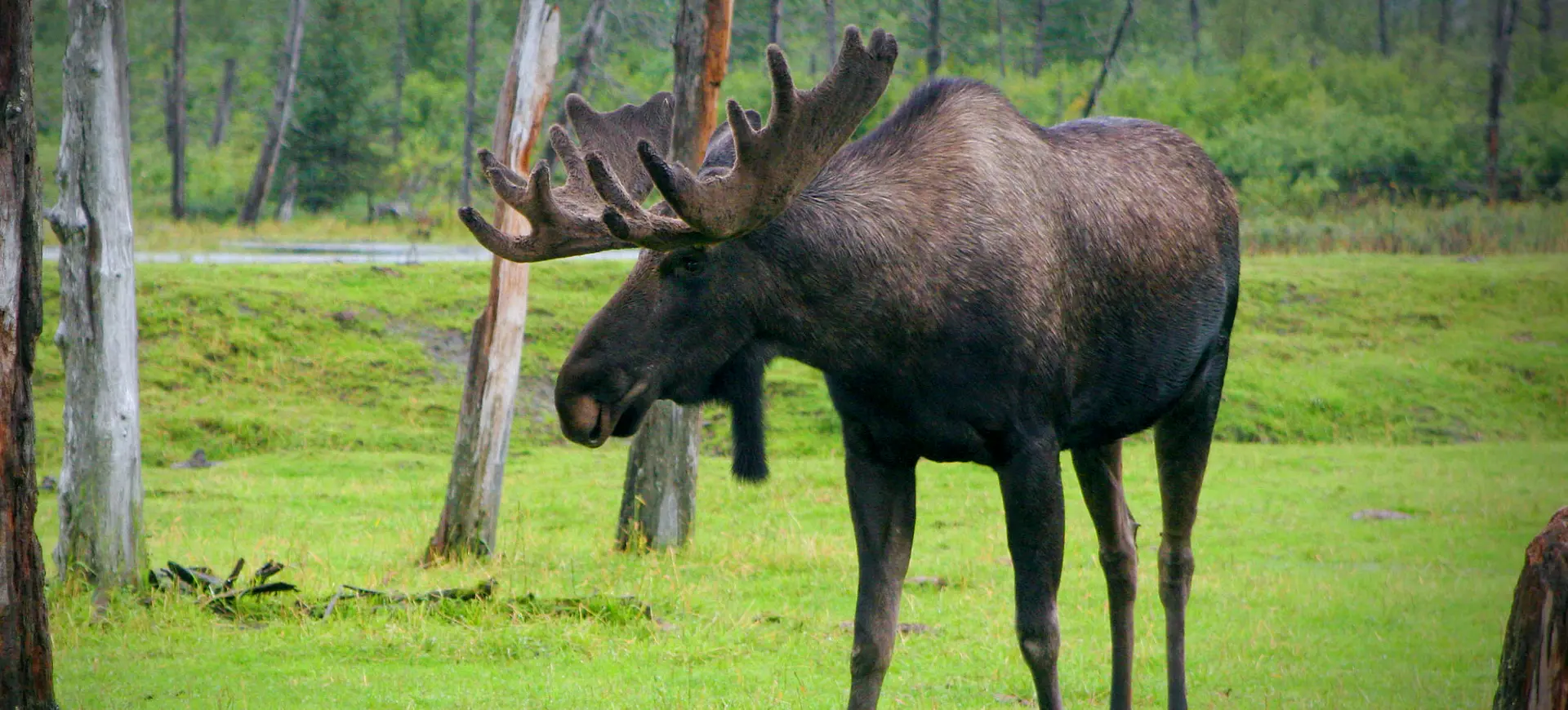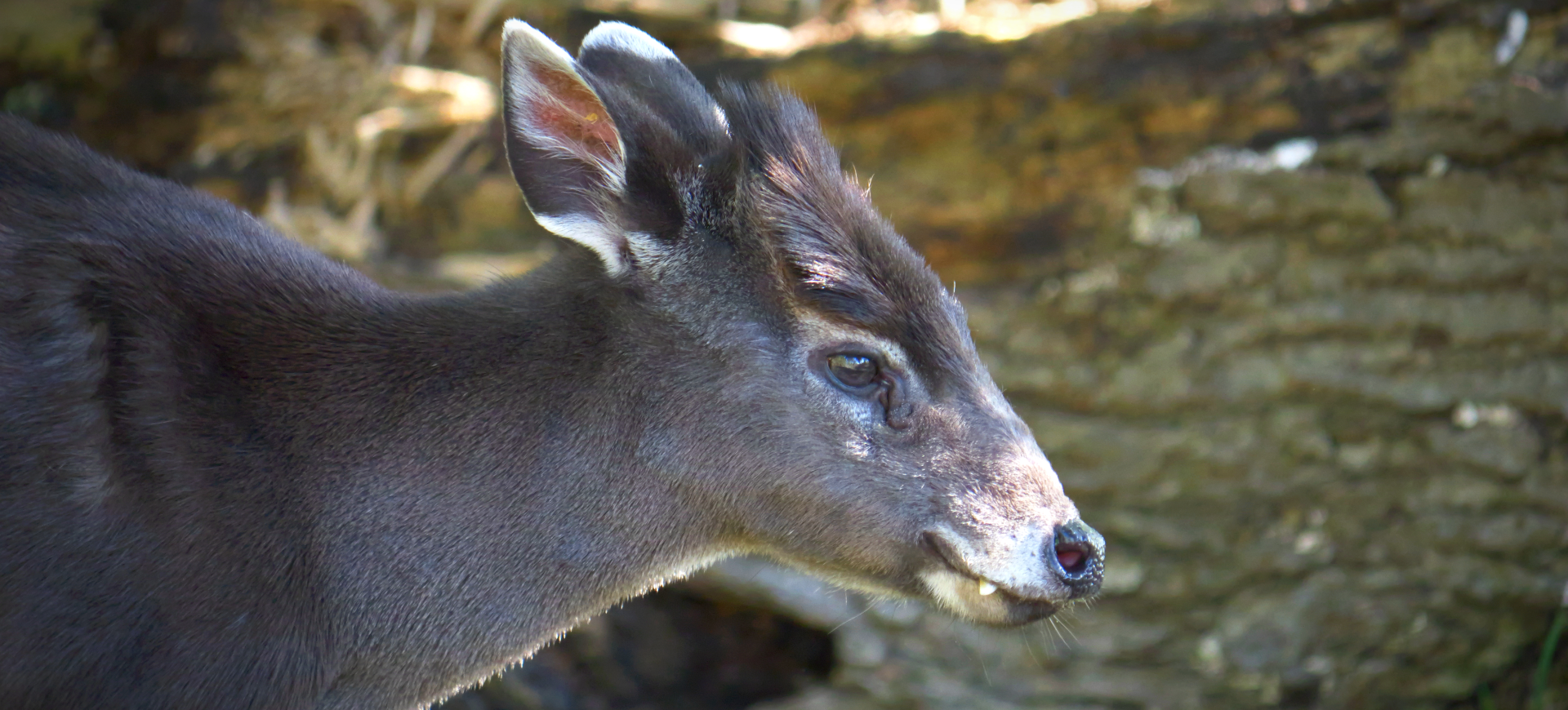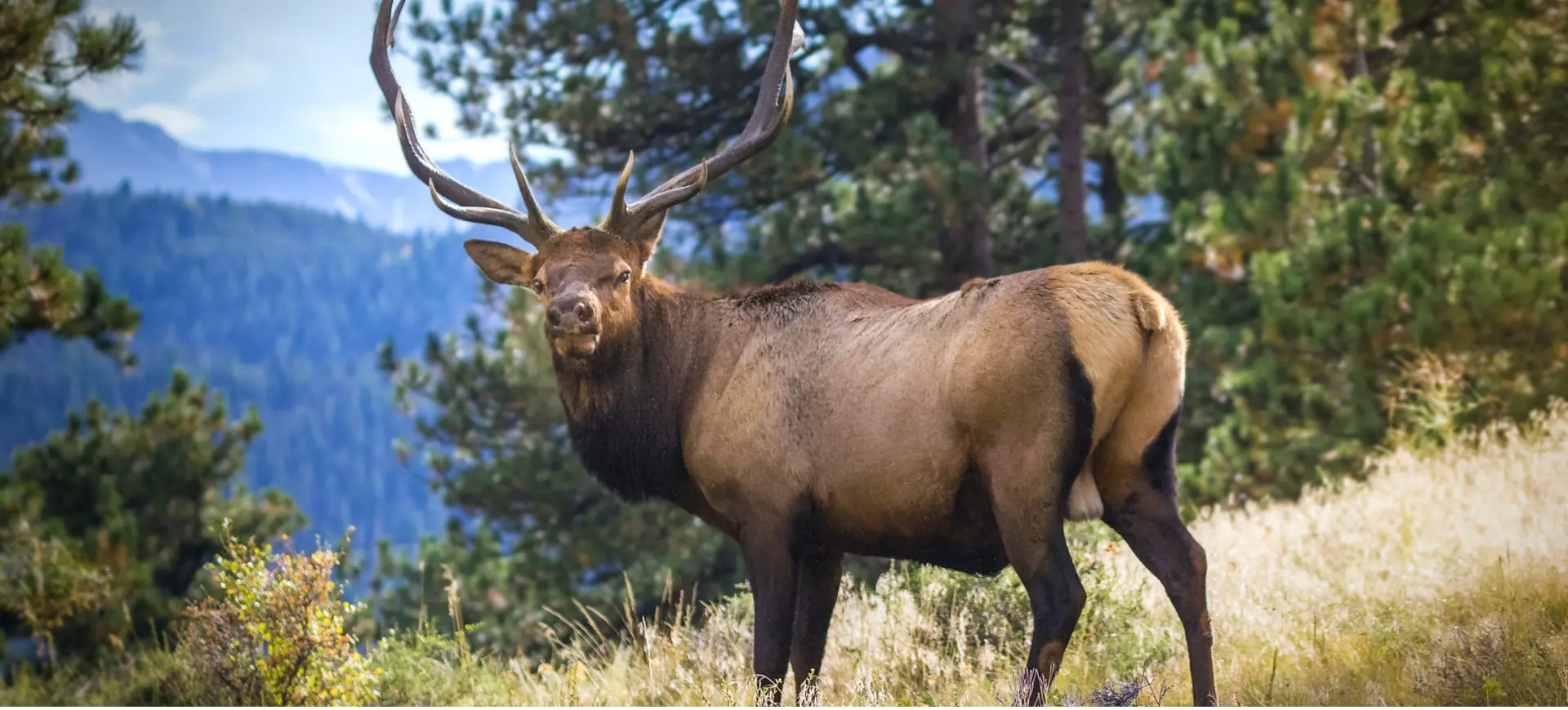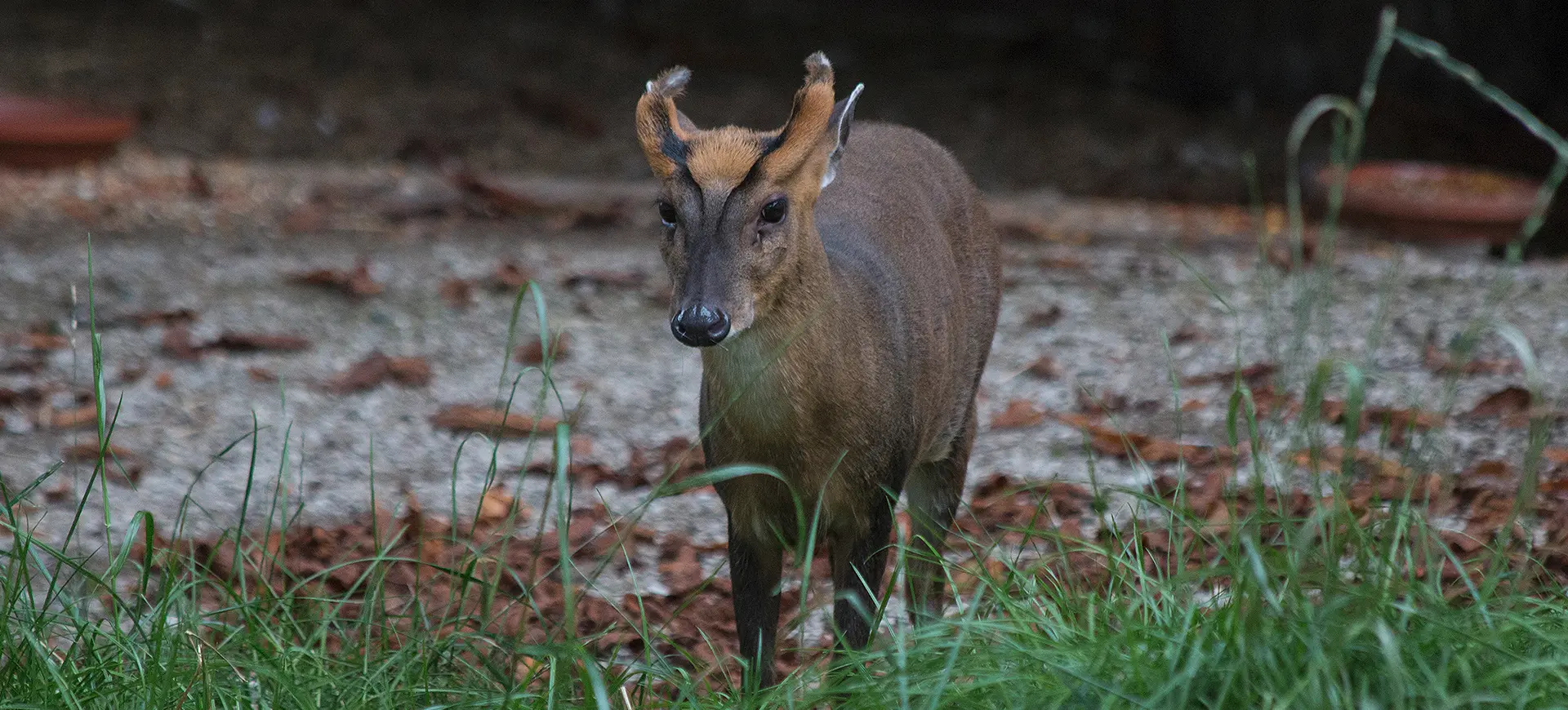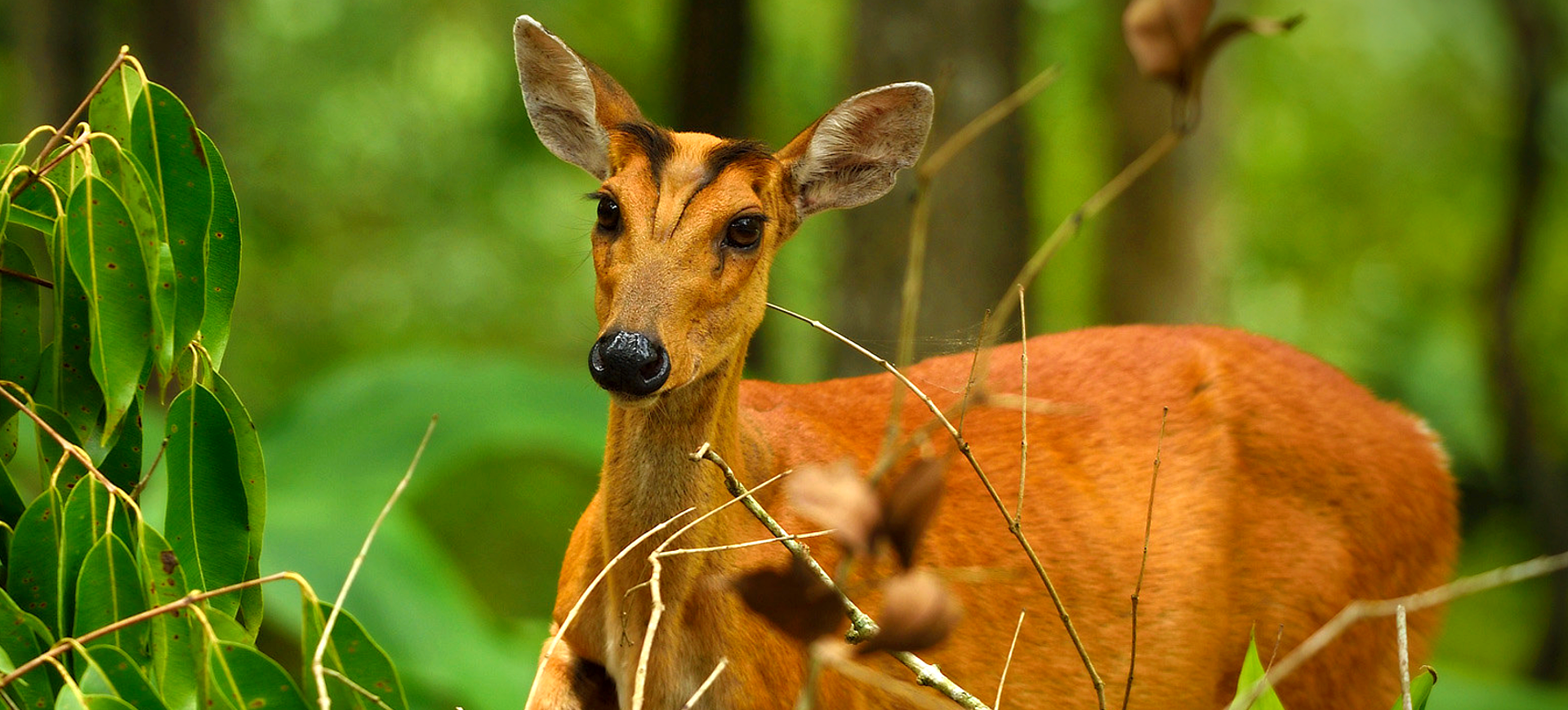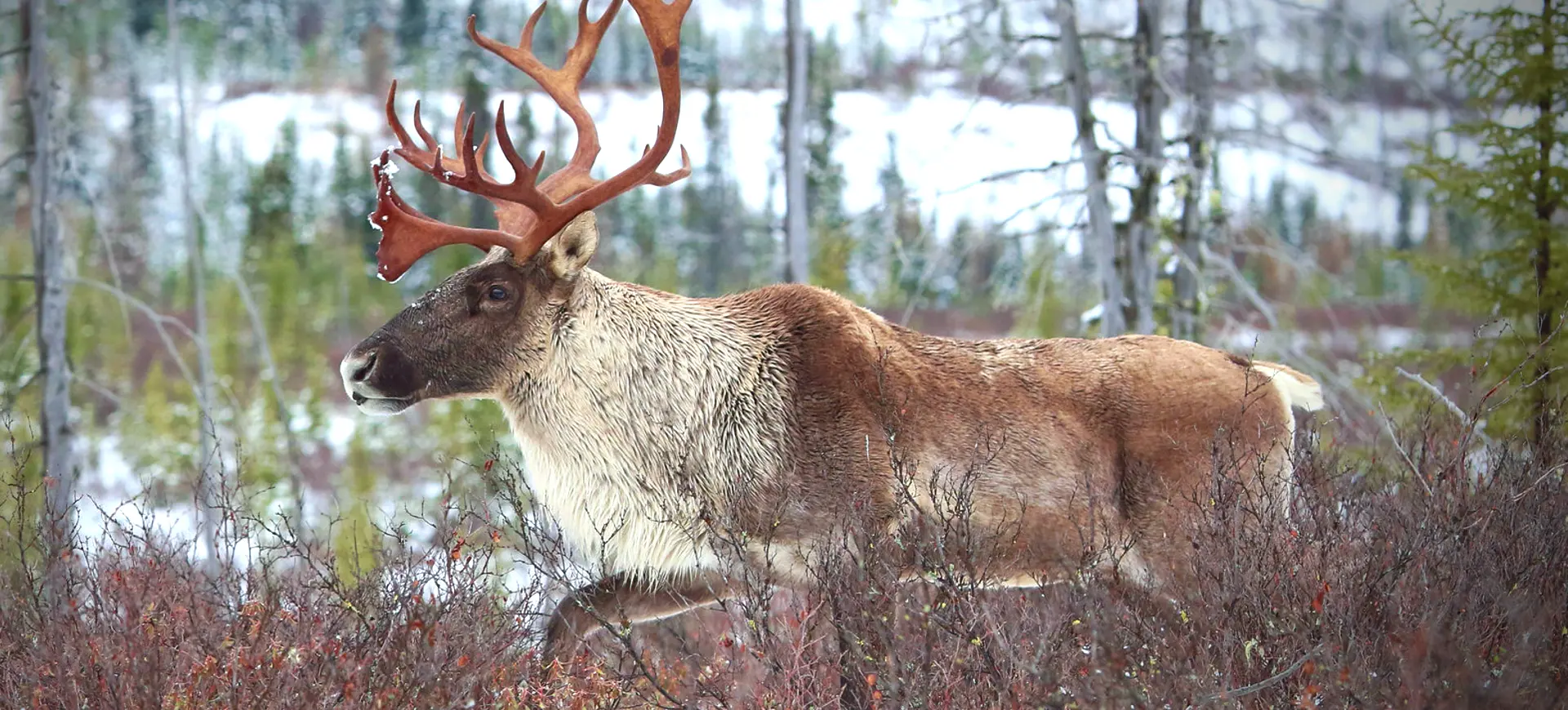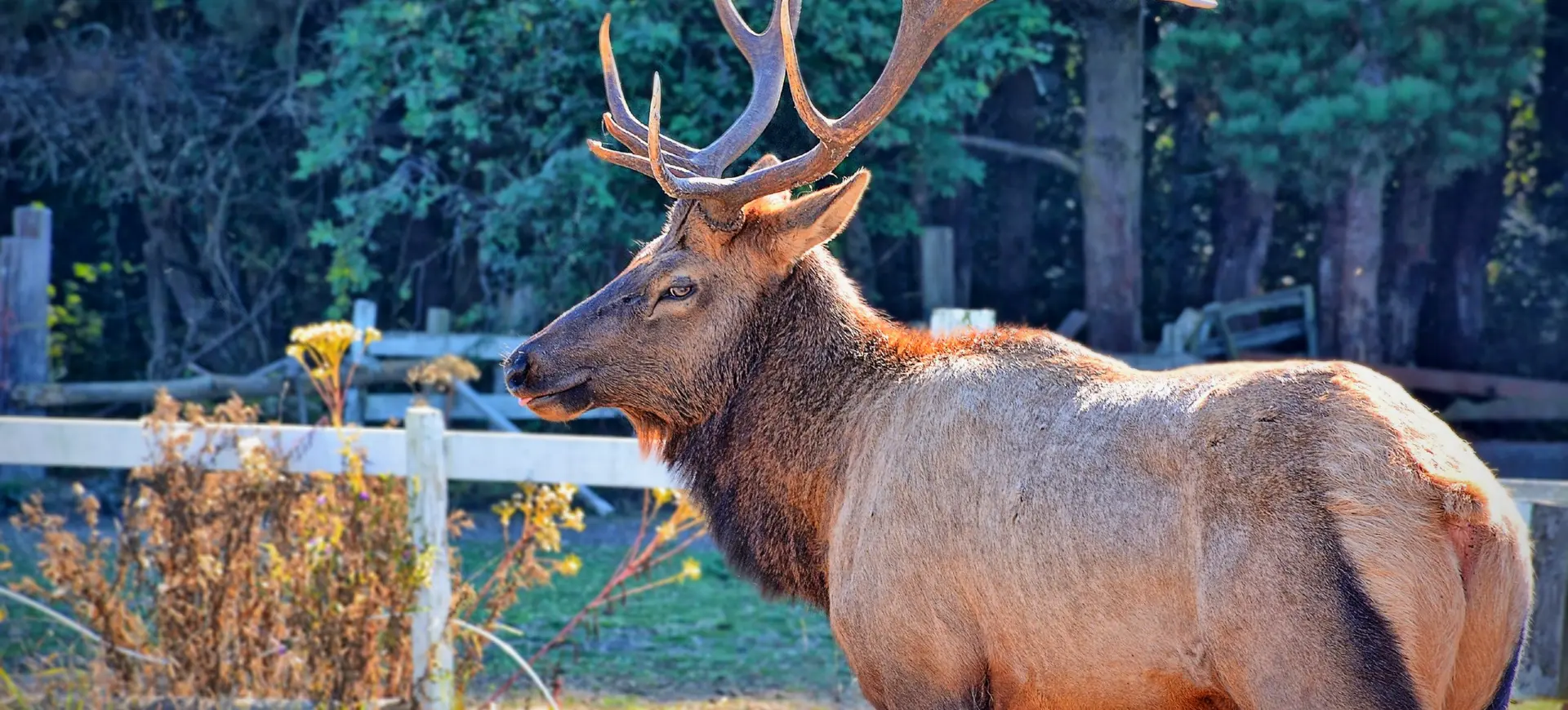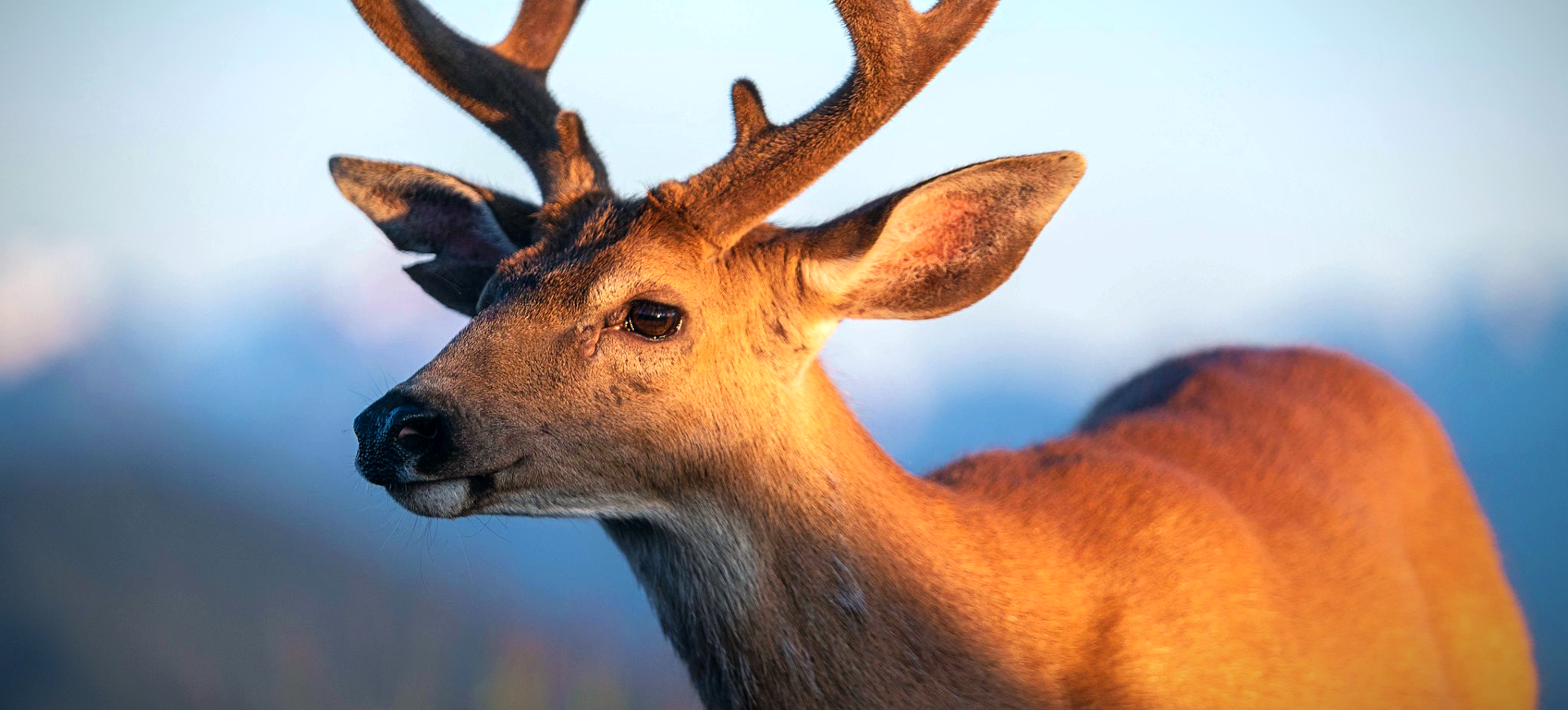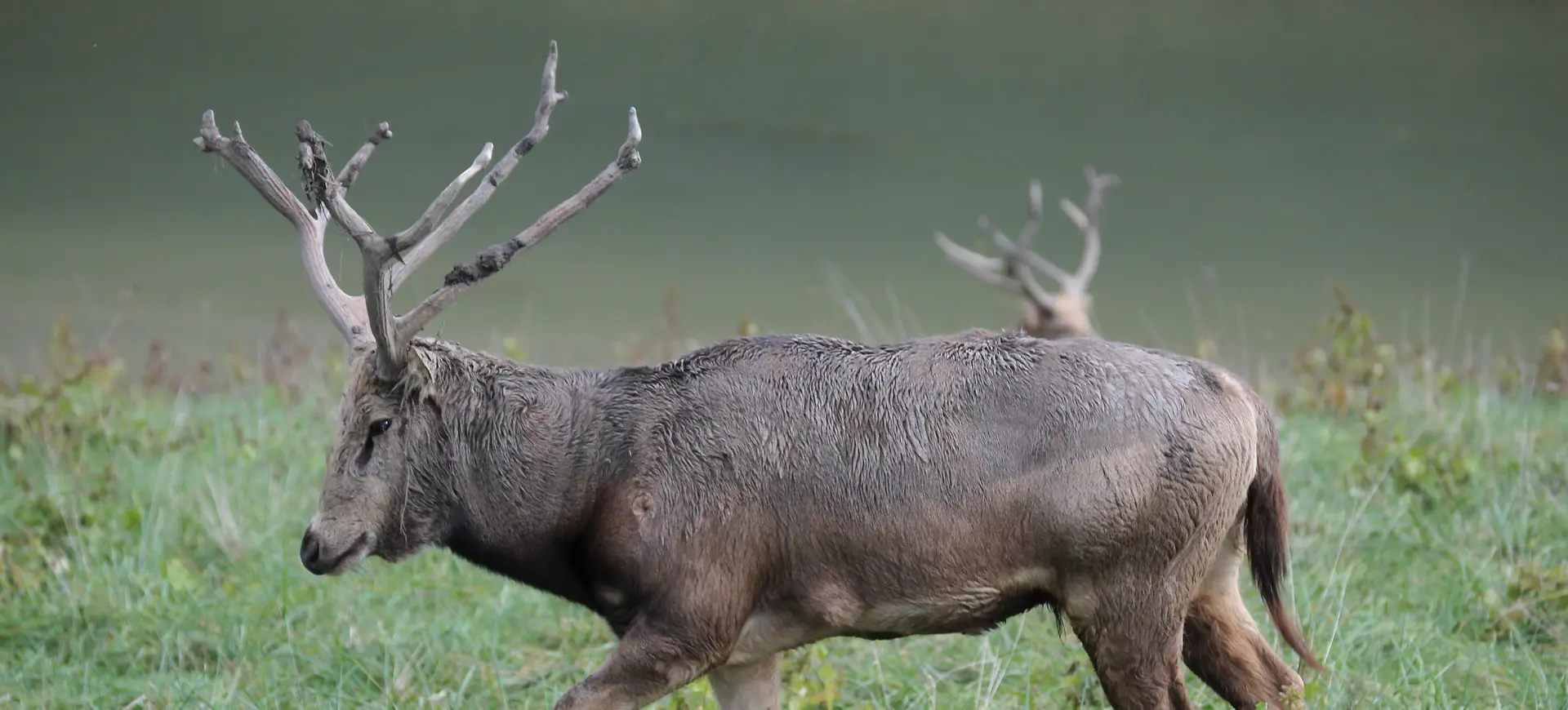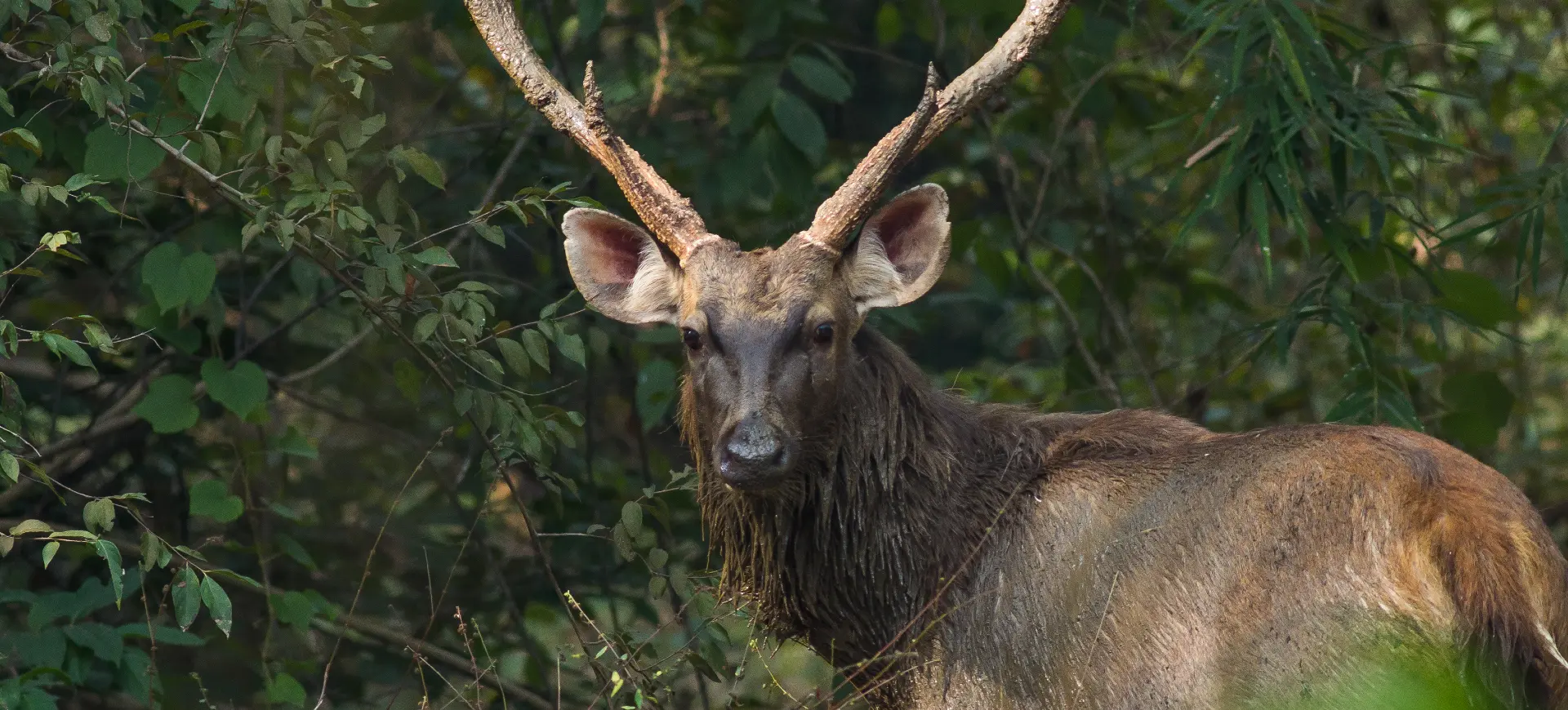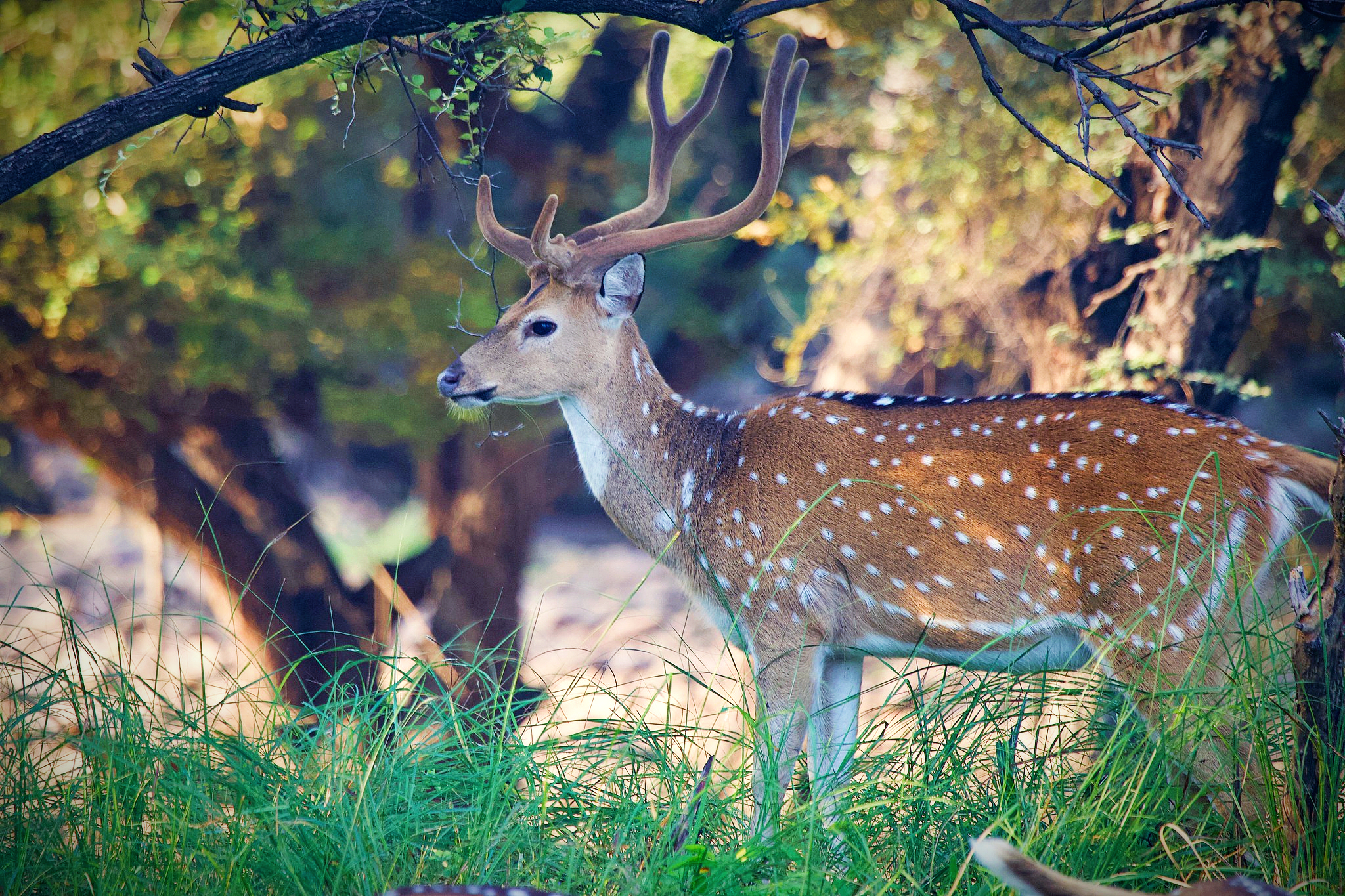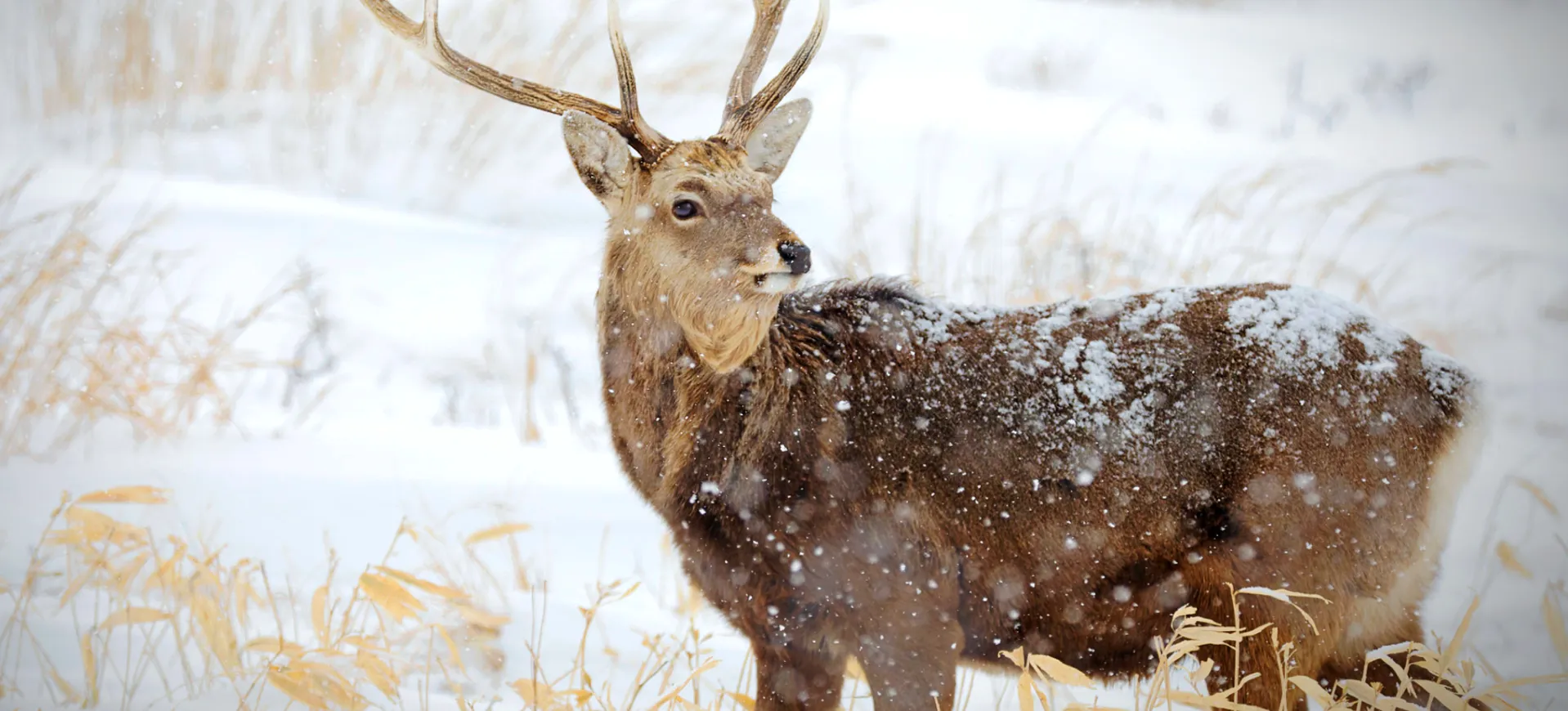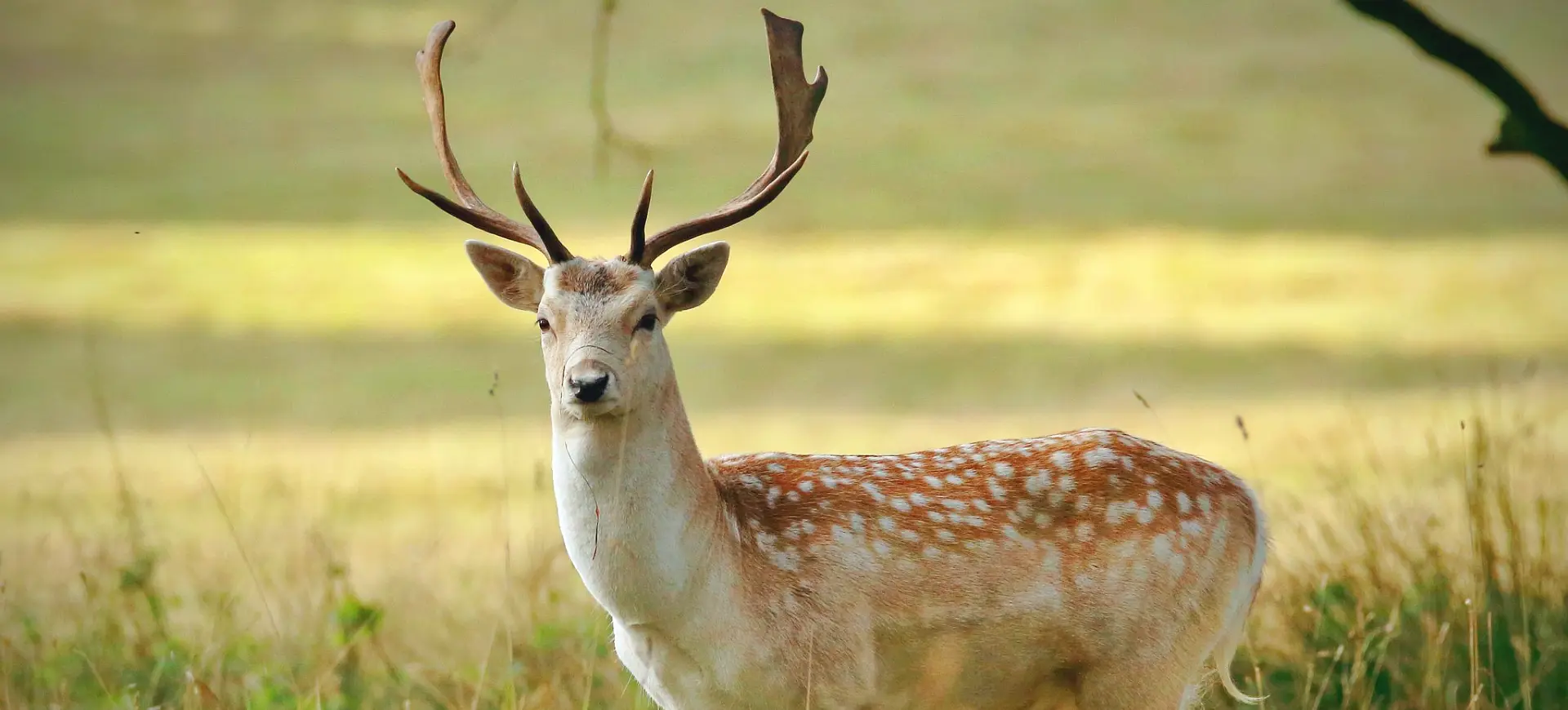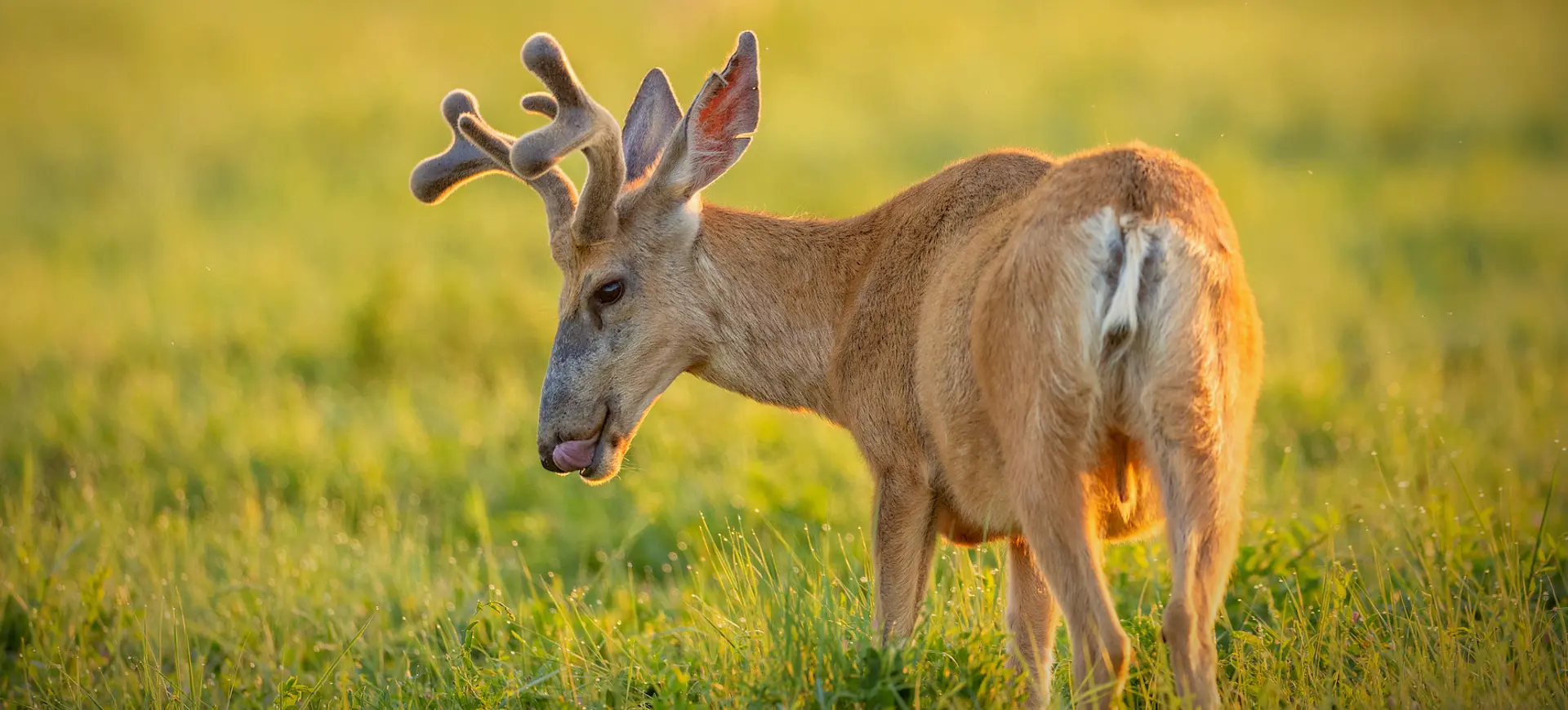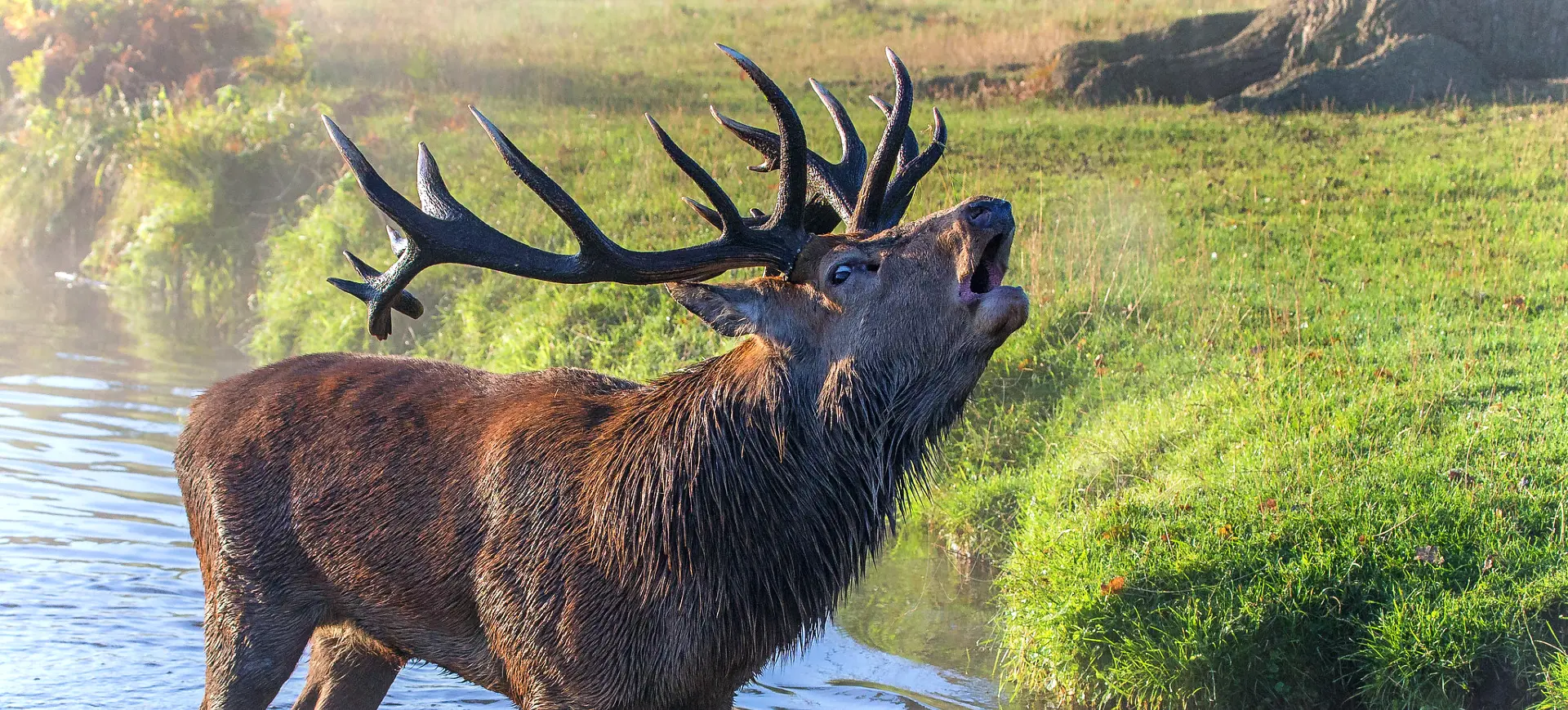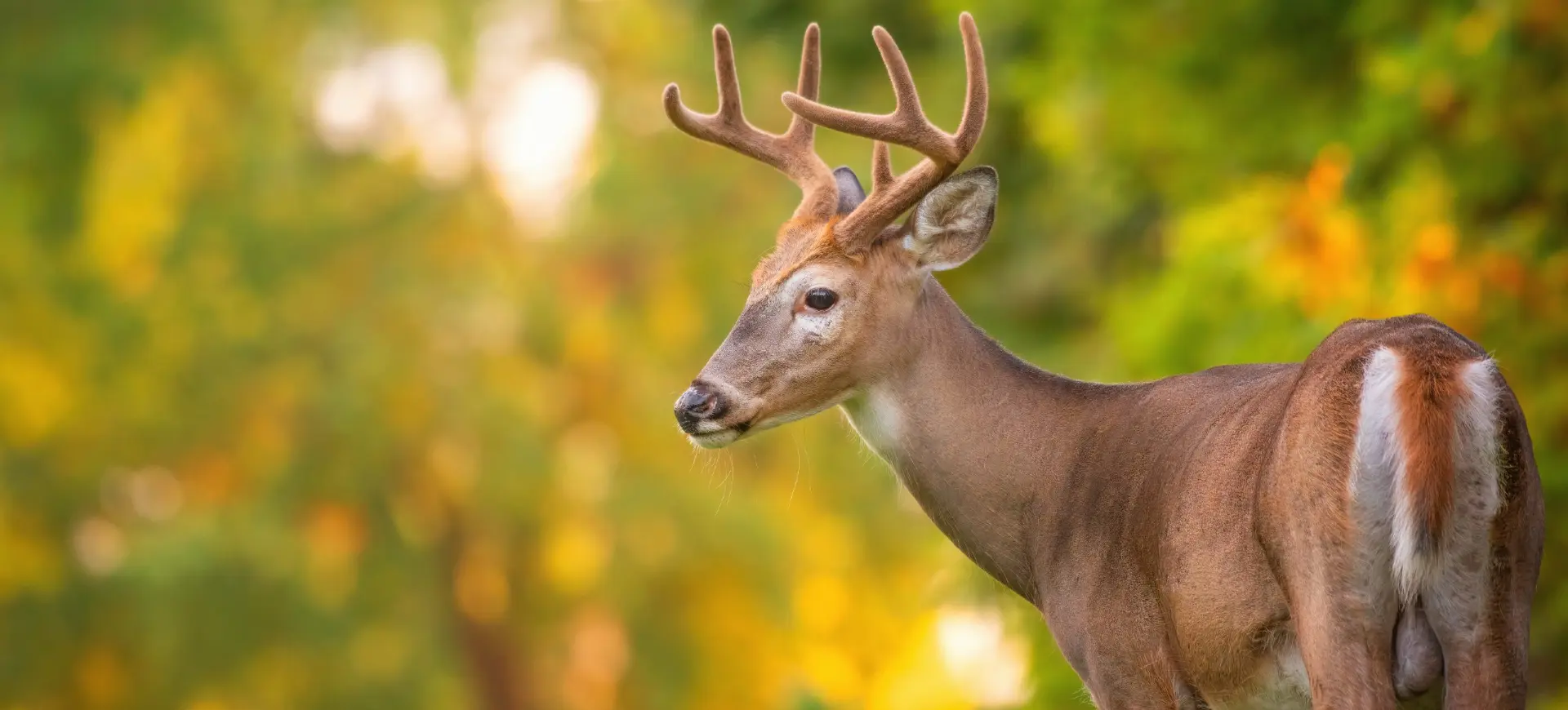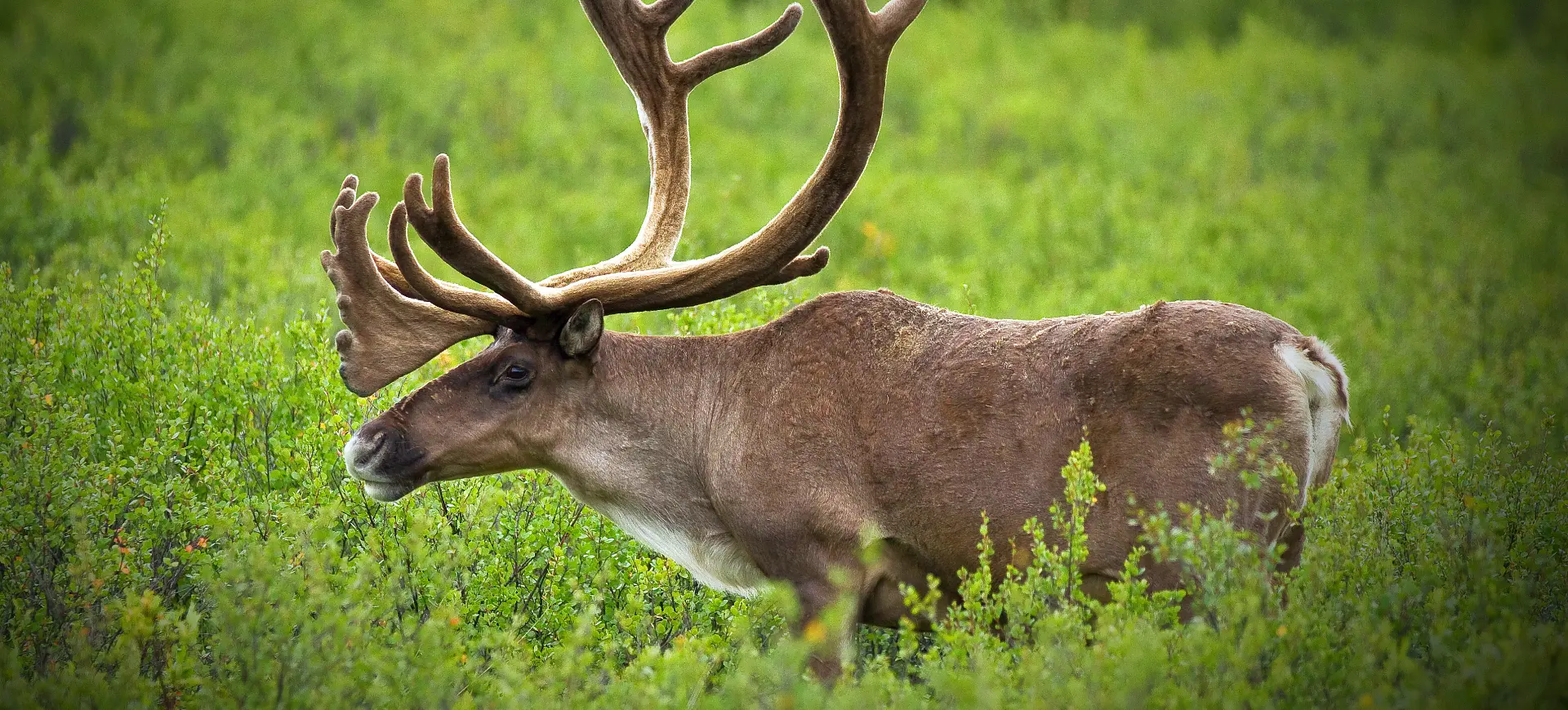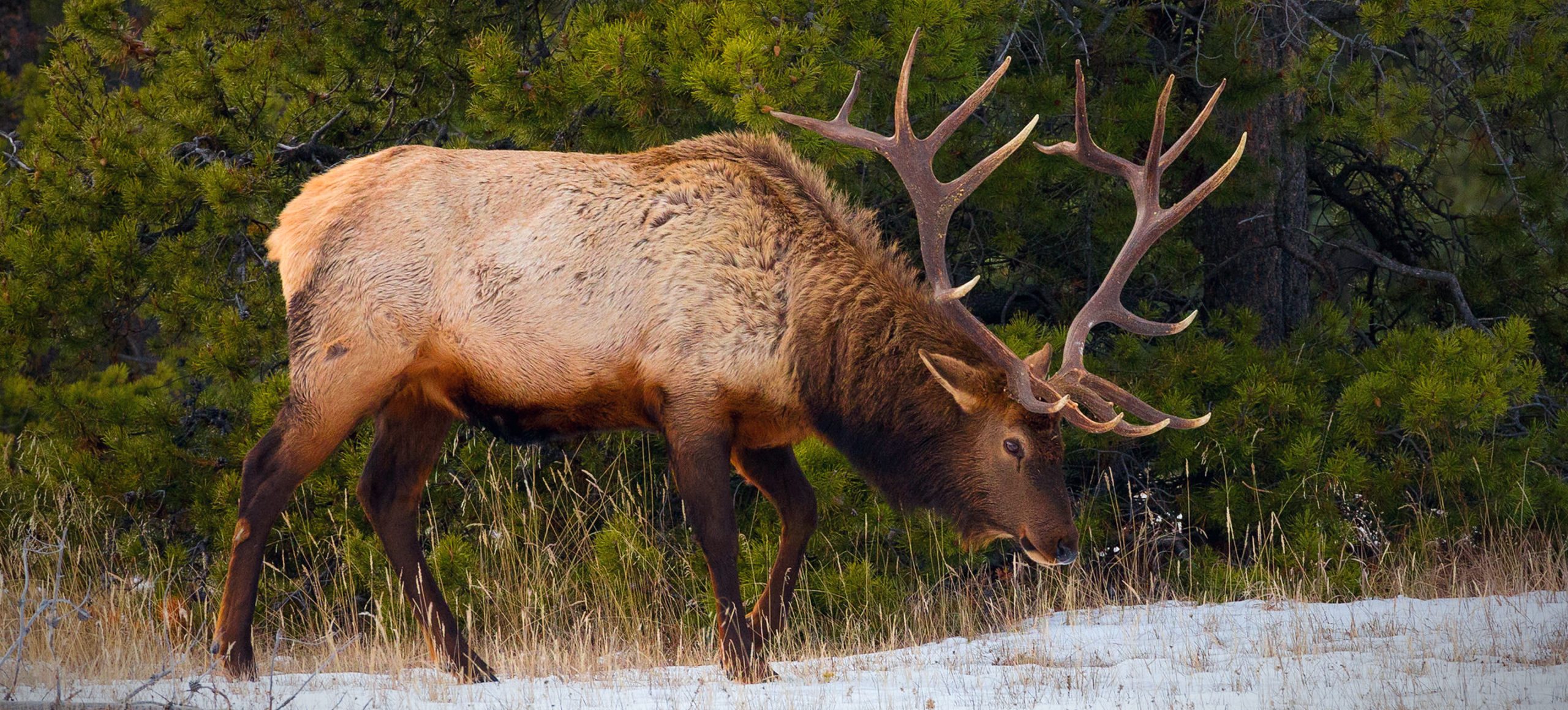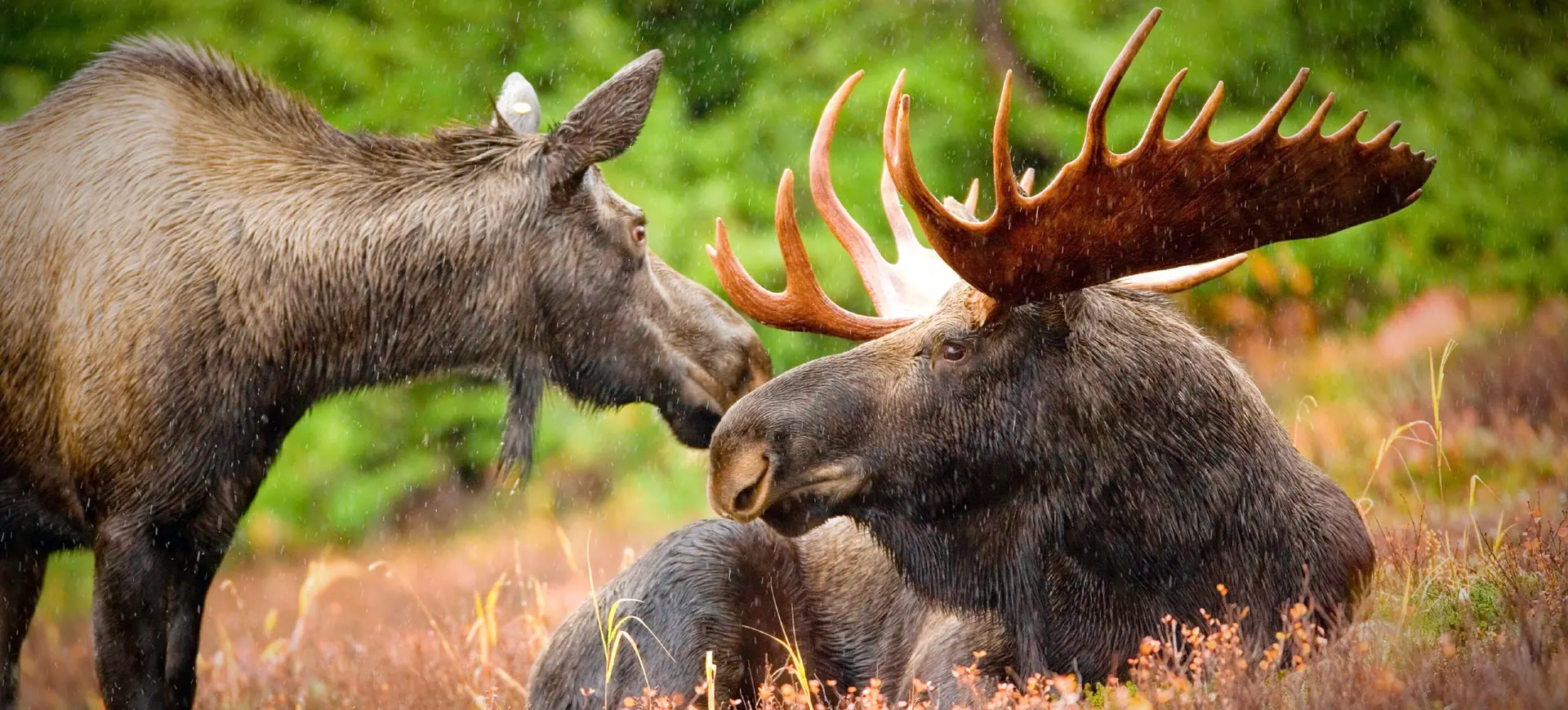Overview
Eld’s Deer, also known as Thiamin or Brow-antlered Deer, is a species of Deer indigenous to Southeast Asia. It is characterized by its unique antlers that are shaped like the brow of a helmet, particularly in males. The species has a coat ranging from light brown to reddish-brown, with lighter underparts. Eld’s Deer are medium-sized, with slender bodies and long legs, adapted for living in grassland habitats.
These deer are primarily diurnal, active mainly during the day. They are known for their preference for grasslands and open woodland areas. Eld’s Deer form small groups, usually consisting of a few females and their young, while males tend to be more solitary or form bachelor groups. Their social structure changes with seasons, often influenced by the availability of resources and the breeding cycle.
Eld’s Deer play a crucial role in their ecosystems as grazers, influencing the composition and structure of grasslands and forests. They are a vital prey species for larger carnivores in their habitats. However, their populations have declined drastically due to habitat loss and hunting, making them one of the more vulnerable deer species in their native range.
Taxonomy
Kingdom
Phylum
Class
Order
Family
Genus
Species
Type
Physical Description:
Eld’s Deer are distinguished by their unique antlers, present only in males. These antlers are large and branched, with a distinctive shape resembling the brow of a helmet. The coat of Eld’s Deer varies seasonally, being thicker and darker during colder months and lighter during warmer periods. Both males and females have a similar coat color, ranging from light brown to reddish-brown, with white underparts.
Adult males are larger and more robust than females, with more pronounced antlers. The body of Eld’s Deer is streamlined, with long legs well-suited for running and maneuvering through grasslands. Their eyes and ears are large, providing excellent senses to detect predators. During the rut, males develop a mane that distinguishes them from females.

Lifespan: Wild: ~15 years || Captivity: ~20 years

Weight: Male: 330 - 440 lbs (150 - 200 kg) || Female: 220 - 330 lbs (100 - 150 kg)

Length: Male: 70 - 78 inches (180 - 200 cm) || Female: 65 - 72 inches (165 - 182 cm)

Height: Male: 44 - 48 inches (112 - 122 cm) || Female: 40 - 44 inches (102 - 112 cm)

Top Speed: 45 mph (72 km/h)
Characteristic:
Native Habitat:
Eld’s Deer are native to Southeast Asia’s grasslands, open forests, and floodplains. They prefer habitats that offer a combination of open grassy areas for feeding and forested areas for shelter. These habitats provide the necessary resources for feeding, breeding, and escaping predators. Water availability is also a key factor in their habitat preference, as they need regular access to water sources.
A tropical climate with distinct wet and dry seasons characterizes their natural habitats. Eld’s Deer are well-adapted to this environment, with their behavior and movements often influenced by seasonal changes. However, agricultural expansion and human development have greatly reduced and fragmented their habitats.
Climate Zones:
Biogeographical Realms:
Continents:
Diet:
Diet & Feeding Habits:
Eld’s Deer are primarily grazers, feeding on various grasses in their grassland habitats. They also consume leaves, shoots, and fruits, depending on the availability and season. Their feeding habits significantly impact the vegetation structure of their habitats, as they play a role in controlling the growth of certain plant species.
The Deer prefer areas with a mix of grassland and forest, providing food and cover. They feed in the early morning and late afternoon, avoiding the hottest parts of the day. Eld’s Deer have a four-chambered stomach, typical of ruminants, which allows them to digest tough plant material efficiently. In times of scarcity, they can adapt their diet to include more browse (leaves and twigs) from trees and shrubs.
Mating Behavior:
Mating Description:
Eld’s Deer have a polygynous mating system, where dominant males mate with multiple females. During the mating season, males become more territorial and may fight with other males to establish dominance and gain access to females. These fights involve antler wrestling and can sometimes lead to injuries.
The local climate typically influences the breeding season, often occurring at the end of the dry season and the beginning of the wet season. This timing ensures that the young are born when food is abundant. After a gestation period of about 220 to 240 days, females give birth to one or rarely two fawns. The fawns are well-developed at birth and can stand and walk within a few minutes.
Reproduction Season:
Birth Type:
Pregnancy Duration:
Female Name:
Male Name:
Baby Name:
Social Structure Description:
Eld’s Deer are social animals but less gregarious than other deer species. They form small groups, typically consisting of females and their offspring. Adult males are generally solitary or form small bachelor groups, especially outside the breeding season. Group size and composition vary with habitat, resource availability, and season.
Communication among Eld’s Deer involves vocalizations, body language, and scent marking. They have a complex social structure that helps them in resource utilization, predator avoidance, and rearing of young. The social behavior of these Deer, including their group dynamics and interactions, is an important aspect of their ecology and survival.
Groups:
Conservation Status:
Population Trend:
Eld’s Deer are classified as Endangered by the IUCN, with their populations continuing to decline. The primary causes of this decline are habitat loss and fragmentation, along with poaching for meat and antlers. Their populations are now limited to small, isolated areas within their former range.
In some areas, conservation efforts have led to the stabilization of populations, but overall numbers remain low. The species’ survival depends on effective habitat management, protection from hunting, and efforts to connect fragmented populations. Conservation breeding programs in captivity have also been initiated to support population recovery.
Population Threats:

Eld’s Deer face significant challenges due to habitat loss, primarily driven by agricultural expansion, urban development, and logging activities. These factors lead to the fragmentation of their natural habitats, diminishing the areas available for their survival and breeding. Poaching is another critical threat, with Eld’s Deer targeted for their meat and antlers, particularly in regions with inadequate law enforcement. Additionally, conflicts with humans, especially in agricultural areas where these Deer may feed on crops, further endanger their existence.
The species is also vulnerable to various diseases, which severely threaten the smaller, isolated populations. These health issues can lead to rapid declines in numbers, affecting the species’ overall genetic diversity and resilience. Furthermore, the impacts of climate change are becoming increasingly evident, altering the quality of their habitats and affecting the availability of crucial food resources. These environmental changes add another layer of complexity to the conservation and management of Eld’s Deer populations.
Conservation Efforts:
Conservation efforts for Eld’s Deer include habitat protection and restoration, anti-poaching measures, and community engagement. Protected areas play a crucial role in providing safe habitats for these deer. Efforts are also being made to establish wildlife corridors to connect isolated populations and facilitate genetic exchange.
Community-based conservation initiatives are important, particularly in areas where Eld’s Deer conflicts with human activities. These initiatives include awareness programs and the development of sustainable livelihoods that reduce dependence on the forest. Captive breeding programs have been established to supplement wild populations and ensure the species’ genetic diversity.
Additional Resources:
Fun Facts
- Eld’s Deer are named after Lt. Colonel Eld, a British officer who first described the species.
- The species is known for its remarkable jumping ability to leap over obstacles easily.
- Eld’s Deer are excellent swimmers and often cross water bodies in their habitat.
- The antlers of Eld’s Deer are among the most uniquely shaped of any deer species.
- They are known to consume much water, especially during the dry season.
- In Manipur, India, local communities consider Eld’s Deer sacred.
- The species’ ability to adapt to seasonal changes is key to survival in varied habitats.
- Eld’s Deer fawns are capable of running within hours of birth.
- Conservation efforts for Eld’s Deer are seen as a model for deer conservation in Asia.
- The species plays a significant role in folklore and cultural traditions in its native range.









